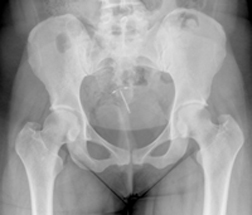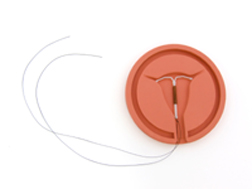| . By Jane Mundy |
|
Long Island, NY: “I can’t believe that the Mirena IUD is still on the market,” says Tara. “There is no way that Bayer cannot know their birth control device is causing so many miscarriages - obviously they choose profit over patient safety.”
 Tara had the Mirena implanted two years ago after her son was born. Interestingly, in this document to Bayer from the Food and Drug Administration, the Mirena maker says that “Mirena is recommended for women who have had at least one child.” Tara is so thankful she has a child because at this point she thinks that infertility is one of Mirena birth control side effects.
Tara had the Mirena implanted two years ago after her son was born. Interestingly, in this document to Bayer from the Food and Drug Administration, the Mirena maker says that “Mirena is recommended for women who have had at least one child.” Tara is so thankful she has a child because at this point she thinks that infertility is one of Mirena birth control side effects.
“Bayer Mirena warnings should include infertility,” says Tara, 28 years old. It would seem that the FDA would agree by issuing the following statement in January 2010:
“The risk presentation omits the contraindications regarding untreated lower genital tract infections and conditions associated with increased susceptibility to pelvic infections, and does not adequately convey that should a woman become pregnant while using Mirena, she may lose her baby or her fertility.”
Rather than remove Mirena from the market, however, Bayer was requested (in the same document as above) by the FDA to cease using certain promotional materials, i.e., “Mirena may help couples keep life simple” and that Mirena will “help you be more intimate” with your partner.
For women like Tara, these statements by Bayer are nothing short of outrageous, and she is appalled that the FDA has not recalled Mirena.
“When I had the Mirena removed, my doctor had a hard time finding it because it had become embedded in my fallopian tube,” says Tara. “It was so painful, and my gynecologist (I have since changed to another doctor) didn’t give me any advice on what to do or what not to do. About two months later, I became pregnant but miscarried at eight weeks.”
Tara asked her doctor how this could have happened - she was young and healthy and had never miscarried before. Her gynecologist told her that she should have waited at least six months after the Mirena was removed so that her body could heal and get her hormones back to the right levels.
“He told me that I would have miscarried before 12 weeks because my uterus wasn’t strong enough to hold the child,” says Tara, crying. “I had to go to the hospital and get a D & C. I was heartbroken and depressed.” Add to that another emotion: she was soon to become furious.
“My husband and I decided to wait, and in August, I found out that I was seven weeks pregnant,” Tara says. “My new gynecologist had been vigilantly checking my hormone levels, and at the beginning of September, I had a sonogram. The technician asked me if I was pregnant, which I found odd. She had to do an internal sonogram and found that the baby was in my fallopian tube - an ectopic pregnancy. She gave her condolences and then my gynecologist, visibly upset, told me it was so unexpected.”
There was nothing they could do; an ectopic pregnancy can be life threatening. Tara had her tube and ovary removed - the tube where the Mirena had become embedded months ago.
“My doctor says that I can try to have another baby but I don’t know if I want to go through this again,” Tara explains. “If I knew that Mirena can cause miscarriages and ectopic pregnancies, I would never have had this IUD. Honestly, I don’t know if this has affected my fertility; I don’t know if I can have any more kids. As well, I was out of work for so long and now I am out of work again and cannot yet lift my son from the surgery. Mirena has caused so much pain on so many levels: physically, emotionally and even financially.”
The Mayo Clinic lists Mirena side effects and explains that if you do conceive while using Mirena, you’re at higher risk of an ectopic pregnancy - when the fertilized egg implants outside the uterus, usually in a fallopian tube. It does not go so far to say that Mirena can cause an ectopic pregnancy after it has been removed.
 Tara had the Mirena implanted two years ago after her son was born. Interestingly, in this document to Bayer from the Food and Drug Administration, the Mirena maker says that “Mirena is recommended for women who have had at least one child.” Tara is so thankful she has a child because at this point she thinks that infertility is one of Mirena birth control side effects.
Tara had the Mirena implanted two years ago after her son was born. Interestingly, in this document to Bayer from the Food and Drug Administration, the Mirena maker says that “Mirena is recommended for women who have had at least one child.” Tara is so thankful she has a child because at this point she thinks that infertility is one of Mirena birth control side effects.“Bayer Mirena warnings should include infertility,” says Tara, 28 years old. It would seem that the FDA would agree by issuing the following statement in January 2010:
“The risk presentation omits the contraindications regarding untreated lower genital tract infections and conditions associated with increased susceptibility to pelvic infections, and does not adequately convey that should a woman become pregnant while using Mirena, she may lose her baby or her fertility.”
Rather than remove Mirena from the market, however, Bayer was requested (in the same document as above) by the FDA to cease using certain promotional materials, i.e., “Mirena may help couples keep life simple” and that Mirena will “help you be more intimate” with your partner.
For women like Tara, these statements by Bayer are nothing short of outrageous, and she is appalled that the FDA has not recalled Mirena.
“When I had the Mirena removed, my doctor had a hard time finding it because it had become embedded in my fallopian tube,” says Tara. “It was so painful, and my gynecologist (I have since changed to another doctor) didn’t give me any advice on what to do or what not to do. About two months later, I became pregnant but miscarried at eight weeks.”
Tara asked her doctor how this could have happened - she was young and healthy and had never miscarried before. Her gynecologist told her that she should have waited at least six months after the Mirena was removed so that her body could heal and get her hormones back to the right levels.
“He told me that I would have miscarried before 12 weeks because my uterus wasn’t strong enough to hold the child,” says Tara, crying. “I had to go to the hospital and get a D & C. I was heartbroken and depressed.” Add to that another emotion: she was soon to become furious.
“My husband and I decided to wait, and in August, I found out that I was seven weeks pregnant,” Tara says. “My new gynecologist had been vigilantly checking my hormone levels, and at the beginning of September, I had a sonogram. The technician asked me if I was pregnant, which I found odd. She had to do an internal sonogram and found that the baby was in my fallopian tube - an ectopic pregnancy. She gave her condolences and then my gynecologist, visibly upset, told me it was so unexpected.”
There was nothing they could do; an ectopic pregnancy can be life threatening. Tara had her tube and ovary removed - the tube where the Mirena had become embedded months ago.
“My doctor says that I can try to have another baby but I don’t know if I want to go through this again,” Tara explains. “If I knew that Mirena can cause miscarriages and ectopic pregnancies, I would never have had this IUD. Honestly, I don’t know if this has affected my fertility; I don’t know if I can have any more kids. As well, I was out of work for so long and now I am out of work again and cannot yet lift my son from the surgery. Mirena has caused so much pain on so many levels: physically, emotionally and even financially.”
The Mayo Clinic lists Mirena side effects and explains that if you do conceive while using Mirena, you’re at higher risk of an ectopic pregnancy - when the fertilized egg implants outside the uterus, usually in a fallopian tube. It does not go so far to say that Mirena can cause an ectopic pregnancy after it has been removed.
One of the most common Mirena Coil side effects is yeast infection. Have you read this? "Yeast Infection No More" by Linda Allen. Linda is an author, researcher, nutritionist and health consultant who dedicated her life to creating the ultimate holistic yeast infection solution guaranteed to permanently cure the root of Candida and dramatically improve the overall quality of your life, naturally, without the use prescription medication and without any side effects. Learn more by visiting her website YeastInfectionNoMore.com
 Because she had so much cramping and bleeding, Candance had the Mirena IUD (intrauterine device) removed just three months after it was implanted. But more severe Mirena side effects were in store. “It started with my blood pressure going through the roof and several bacterial infections,” says Candance. “By 2009, my body was so out of whack that my doctor ordered a CT Scan, MRI and ultrasound - the latter showed a piece of Mirena the size of my fingertip still in my body; it was embedded into my uterine wall.
Because she had so much cramping and bleeding, Candance had the Mirena IUD (intrauterine device) removed just three months after it was implanted. But more severe Mirena side effects were in store. “It started with my blood pressure going through the roof and several bacterial infections,” says Candance. “By 2009, my body was so out of whack that my doctor ordered a CT Scan, MRI and ultrasound - the latter showed a piece of Mirena the size of my fingertip still in my body; it was embedded into my uterine wall.